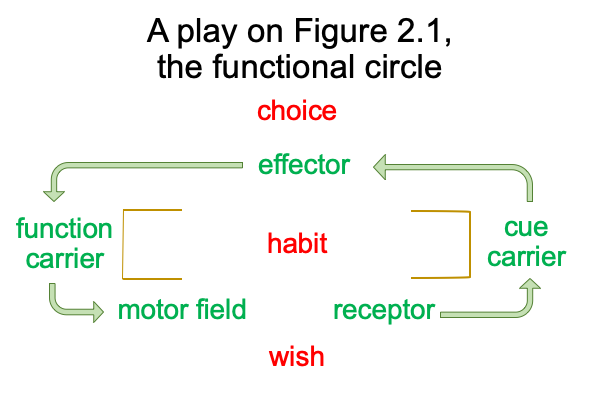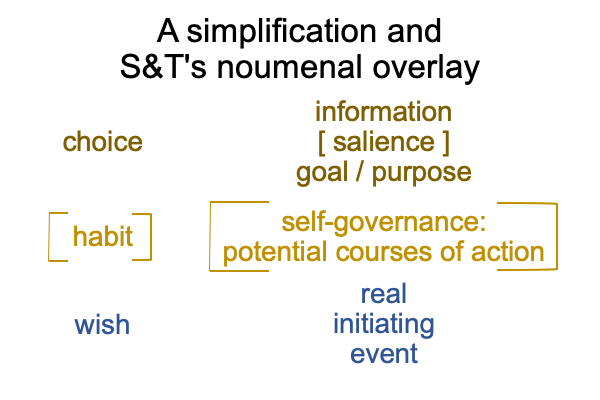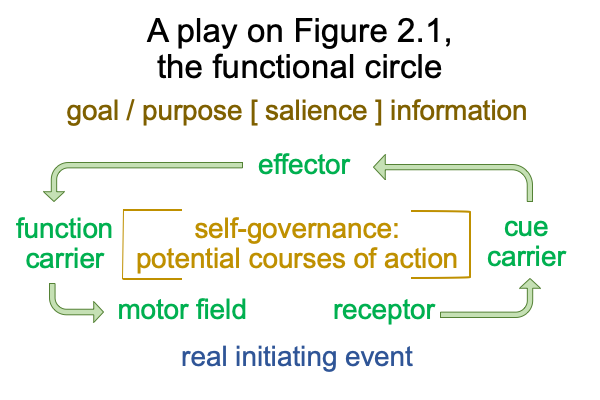0136 Here a map of the general functional circle.

Maybe the circle should be enclosed within the brackets of [habit].
0137 This leads to a question.
What do the authors, Sharov and Tonnessen, offer that cybernetics does not?
Answer: They offer a more semiotic friendly overlay.

0138 One does not see sign-processes bubbling within a noumenon such as choice [habit] wish.
One sees the semiotics within S&T’s noumenal overlay.
The triadic specifying sign-relation has been converted into a noumenal dyad, consistent with Peirce’s category of secondness and reminiscent of Aristotle’s hylomorphe.
Plus, the resulting phenomena are better delineated. The real-initiating event associates to the SVs. The dyad of information [and] goal associates to the SOs. These phenomena can be witnessed by any human because the S&T noumenal overlay not only applies to humans, but humans are adapted to this actuality2, which is independent of the adapting genus2a.
Finally, the things that needs to be modeled, [the contiguity between SOs and SVs] and [the continuity within SOs],directly and indirectly pertain to SIs.
0139 Chapter Two ends and brings Part I to a conclusion with a promise.
A journey awaits the biosemiotician.
Where can the S&T noumenal overlay take us?
As far as the functional circle goes, the S&T noumenal overlay offers an image that is far more clarifying than choice [habit] wish.

Indeed, the functional circle resides within the sign-interpretant of the specifying sign-relation (SIs).
